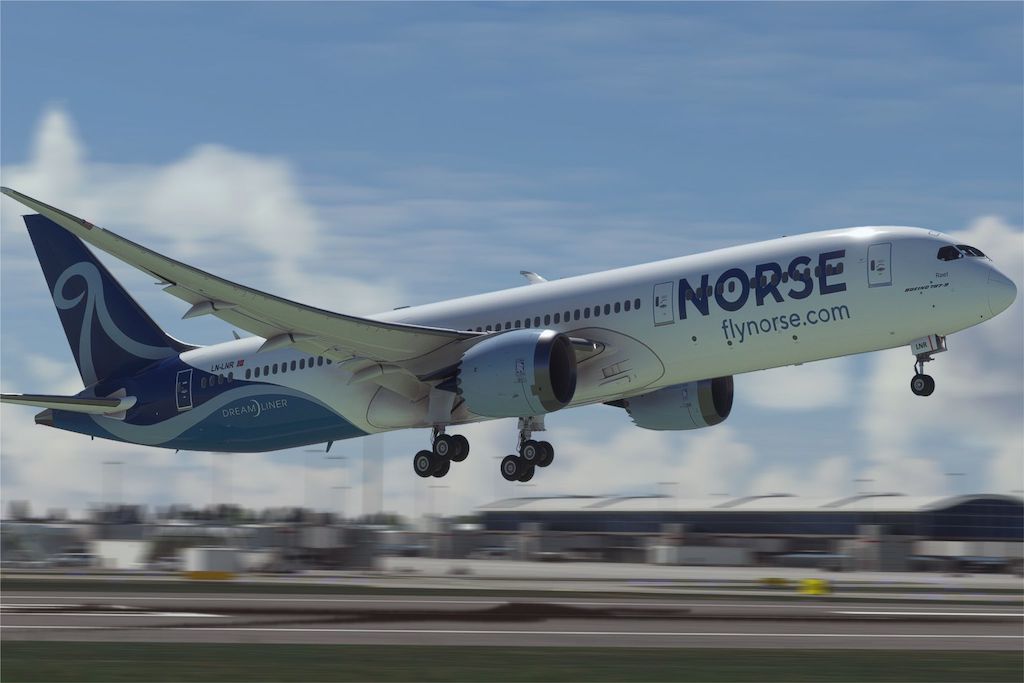Norse Atlantic Confident in U.S. Approval With Lawmakers and Unions on Board

Photo Credit: Norse Atlantic plans to launch transatlantic service next summer between Oslo and the U.S. Norse Atlantic
By most accounts, leisure demand across the Atlantic Ocean next summer will be strong, with some arguing that leisure traffic could best even the summer of 2019. Airlines on both sides of the ocean have aircraft to spare, with travel to much of the rest of the world expected to lag until 2024, so they're planning to point those planes onto the transatlantic.
It is into this very competitive market that Norse Atlantic Airways plans to launch next year. But CEO Bjørn Tore Larsen isn't too concerned. "It will be a very competitive market," he told Airline Weekly. "Our competitors are very experienced, and I have every reason to be humble when it comes to this business, but I'm confident." He believes, like French Bee President Marc Rochet, that airlines without large premium cabins, like Norse Atlantic, are better placed to capitalize on transatlantic leisure demand when it returns.
"If you have a four-engine aircraft with less seat density, you will be struggling to keep your costs down on a per-seat basis," Larsen said. "From our perspective, flying fuel efficient aircraft with a high seat density means we probably have an advantage."
"I wouldn't be surprised if 2022 [transatlantic demand] would be close to the numbers pre-Covid," Larsen continued. "The dark cloud is the rest of the world, so longhaul capacity will be directed at the transatlantic."
The airline plans to launch next spring — sometime between March and May, Larsen said — with three Boeing 787s plying routes between Oslo and New York Stewart, Fort Lauderdale, and Ontario, Calif., to start. Norse Atlantic plans for a fleet of 15 787s: 12 787-9s with 344 seats, including 56 premium; and three -8s with 291 seats, including 35 premium. "We want to go with a soft start to ensure we can fill the aircraft," Larsen said.
The airline still is seeking its air operators certificate (AOC) from the Norwegian government, with approval expected some time next month. In the meantime, it has filed for the an exemption and foreign air carrier permit from the U.S. Transportation Department, which Larsen expects the agency to grant shortly after the carrier gets its AOC.
When Norse Atlantic originally announced its plans to fly to the U.S., it faced stiff opposition from some of the same U.S. lawmakers that objected to Norwegian Air's plans in the last decade. Rep. Peter DeFazio (D-Ore.) earlier this year urged Transportation Secretary Pete Butigieg to deny Norse Atlantic's application. But since April, the carrier has met with several of its opponents on Capitol Hill, and Larsen said they have been receptive. "We suggested six months ago that their reservations were based on misunderstandings and assumptions," he said. "We have been able to clarify that, and they have acknowledged that our business model is in line with what they would like to see."
The carrier has seen off another issue that plagued Norwegian Air by engaging early with labor. Norse Atlantic and the Association of Flight Attendants struck a preliminary deal assuring the union that employees will be able to organize and that it plans to hire hundreds of U.S.-based staff. The carrier made similar assurances to the British Airline Pilots Association. Larsen said his long history in the maritime industry convinced him of the need to engage with unions early and productively. "Unions in my mind are not the adversary; on the contrary, they are our partners," he said.
The carrier has about 60 employees now and has not yet begun recruiting cabin crew, but plans to start three to four months before its launch. It has begun recruiting pilots and has found no dearth, unlike airlines elsewhere in Europe and in the U.S. Larsen attributes the healthy pilot talent pipeline to other Scandinavian carriers laying off or furloughing staff during the pandemic. Norse Atlantic is in the process of hiring 50 pilots now and had 2,000 applications for those positions. "Scandinavia has a lot of unemployed pilots," he said. "That will change, and in two to three years, there could be a worldwide shortage of pilots."
Norse Atlantic initially will start with flights from Oslo but it plans to expand to U.S. flights from London and Paris. Other European cities are in its sights as well, although Larsen did not specify when or where it plans to expand. The carrier's network and schedule will not be geared toward connections, with passengers from other parts of Scandinavia expected to self-connect onto Norse Atlantic's longhaul network. The carrier sees all of Norway and much of Scandinavia as its catchment area, not just Oslo. "There's a lack of complexity in our model," Larsen said, which will keep costs low. "We think we can stimulate demand and attract customers who wouldn't have flown with our competitors."
But it's keeping its plans relatively modest, especially when compared with Norwegian Air's world-spanning ambitions. Norse Atlantic has no plans to expand into Asia or Latin America. Its business model will focus on flying leisure travelers between Europe with North America. It will adjust its network seasonally, to capture Southbound winter traffic from the Nordics, but Larsen said a recent trend has been for inbound travelers to Scandinavia during the winter. "We want to appeal to explorers," he said. "That's our trademark."
